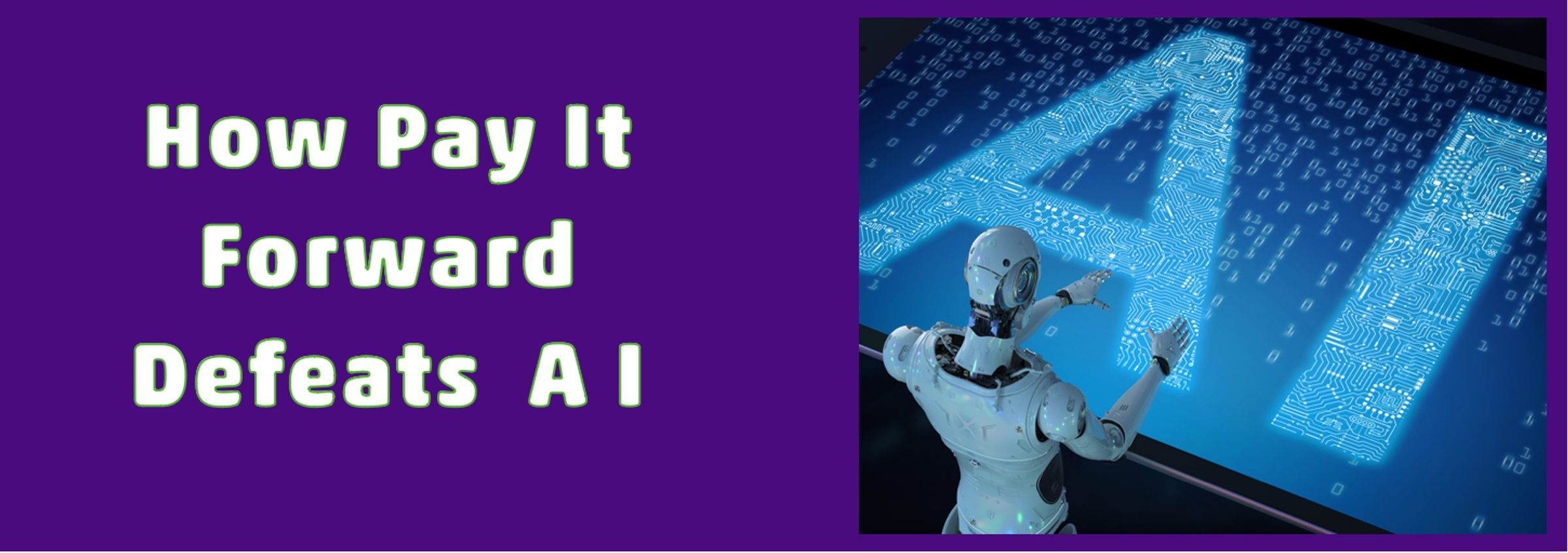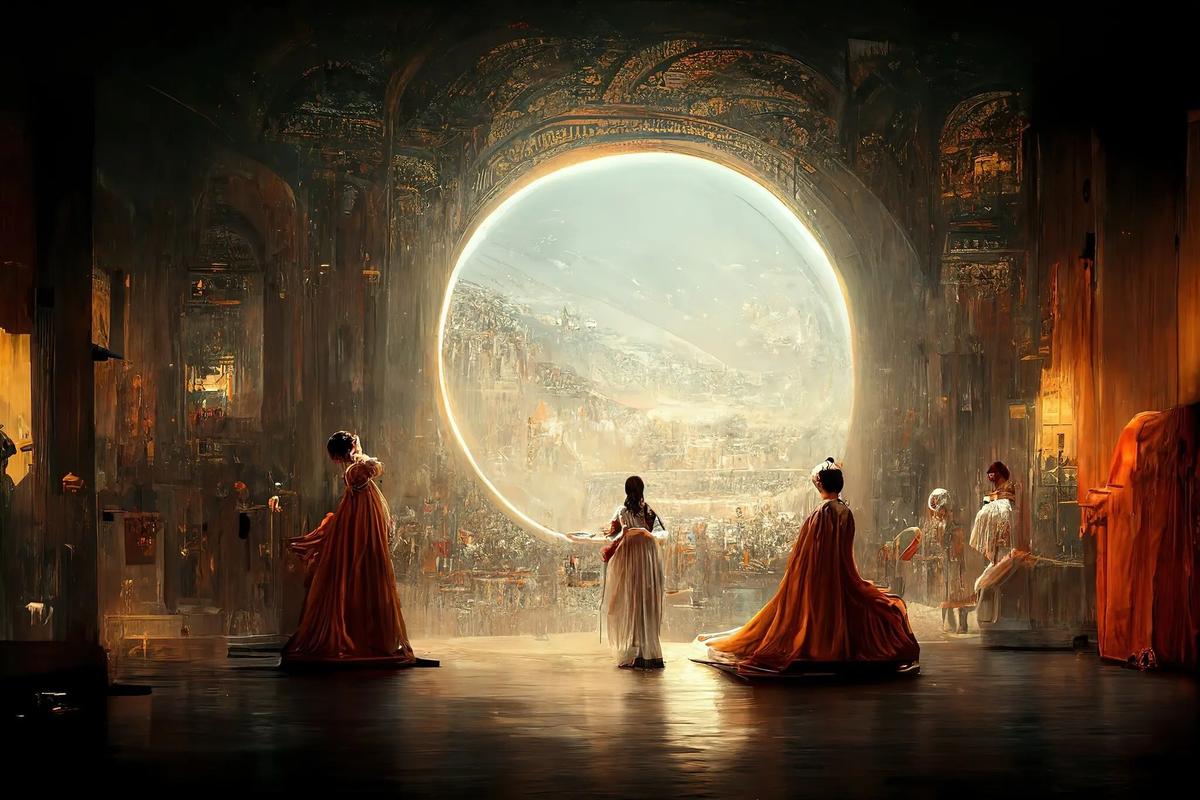How Pay It Forward Defeats A I

Human Skills in a World of Artificial Intelligence
Artificial Intelligence is becoming ever more present in our daily lives. For example, so many websites now offer a small chat box at the bottom left-hand corner that lets you connect with AI and get the help you needed when you chose to visit that website.
Now ChatGPT has come along, and it leaves us asking, “What might this mean for the future of work? What might it mean for teaching and learning?”
The ChatGPT revolution is happening fast. In just over a week, Chat GPT surpassed a million users. It took Instagram two years to reach that benchmark. And this is just the beginning.
OpenAI's ChatGPT is a prototype AI chatbot that has gained a lot of traction among the public for its human-like, detailed answers to inquiries - like drafting a contract between an artist and producer and creating detailed code - and could revolutionize the way people use search engines by not just providing links for users to sift through, but by solving elaborate problems and answering intricate questions.
It's pretty clever, and it can answer any typical or complex question you might be asked at High School - or University, for that matter. You can, for example, even tailor it to 'answer in language a 14-year-old would understand.'
Does this mean if students use ChatGPT, everyone gets pretty much the same answer written in a different way?
And what might this mean for the future? It always felt like creativity - and visual creativity in particular - was a distinctly human endeavour. But then look at this AI-generated image that just won a first place at the Colorado State Fair’s fine arts competition.
Many efficient AI programs allow people to create original, realistic images and art from text descriptions. To generate a realistic image using an AI programme such as State of Diffusion or Dall-E 2, all you need to do is enter a text description of what you would like to see and wait for the AI to create it.
AI can be a shortcut that removes the challenge of learning and ensures that we arrive at an answer with no understanding of how, no learning that we can apply in our life or to real-world problems where knowing 'how' would be useful or even important. Photo Math is a good example of this principle. If you have a maths problem you can't solve, take a photo within the Photo Math app, which provides the answer.
What does all of this mean for the future of education?
Pundits have often said, “We need to prepare students for the jobs that don’t exist yet.” A decade ago, this led to a focus on teaching every student how to code. Now ChatGPT can produce seemingly flawless code in seconds.
So, where do we go if we can’t predict the future?
The answer could be found in taking John Spencer's vintage innovation approach. With vintage innovation, we avoid the extremes of a reactionary “just block it all” approach as well as the naivety of futurism. Here, we mash up the old school and the new tech. We overlay best and next practices. We ask, “what do learners need in a world of AI? What does it mean to do human work in a tech-centric world?”
Vintage innovation is taking old, established ideas and concepts and updating them in a new and innovative way. This can involve reusing, repurposing, or adapting older technologies or designs to create something new and improved.
What Does Vintage Innovation Look Like with AI?
What if teachers used ChatGPT as a tool? That may sound strange, but all new technology comes across as “cheating” initially. Back in the day, we were told to disable spell check because it was cheating. Some said that word processing would make it too easy to modify text. They preferred typewriters instead. Some still would say starting with Wikipedia is a bad idea, viewing that as cheating.
I can see how creators might use ChatGPT as a part of the writing process in a way that’s not all that different from going to Wikipedia first. They’ll take the initial 300 words and rework it, add to it, find their ideas, and ultimately make it their own. In that sense, writing will be more like collage art — which, in many respects, it already is. Your single, solitary voice is distinctly yours, but it’s also part of a chorus shaped by what you read and listen to and who you talk to and all sorts of elements of your culture. When you write, you are never writing alone.
Countering AI With A Focus on the 'Heart'
For Western Heights, our biggest tool in the battle to be better than AI, to do what AI can't, is to provide learning experiences that help our learners develop deeply human skills.
We ask every class, every year, to undertake a Pay It Forward Project - for the benefit of our school, our community, or even our world. In doing so, we teach our children they are part of something bigger than themselves. We are teaching them to be caring, connected, collaborating and contributing citizens of the future.
A second thing we work on is teaching our learners to ask good questions. AI is good, often great, at finding answers. As a rule, AI does not create and ask its own questions. The right question is the key to finding answers that would not otherwise be thought of.
Empowering Students for the Future
We are also focused on growing learners who are independent Leaders of their own Learning. Learners who Love to Learn to Lead.
We are focused on moving our learners from compliance to engagement. Children who love to learn rather than feel they have to learn.
This is the top level of engagement, where learners are highly committed and focused. Having learners who are committed and focused is good; having learners who own their learning is better. We are developing creative, self-directed learners; we go beyond engagement into empowerment. Empowered learners take responsibility to lead themselves and own and lead their learning.
So the best way to prepare our children for the future is by empowering them in the present. When this occurs, our children develop those critical human skills they will need as they navigate an uncertain future.

